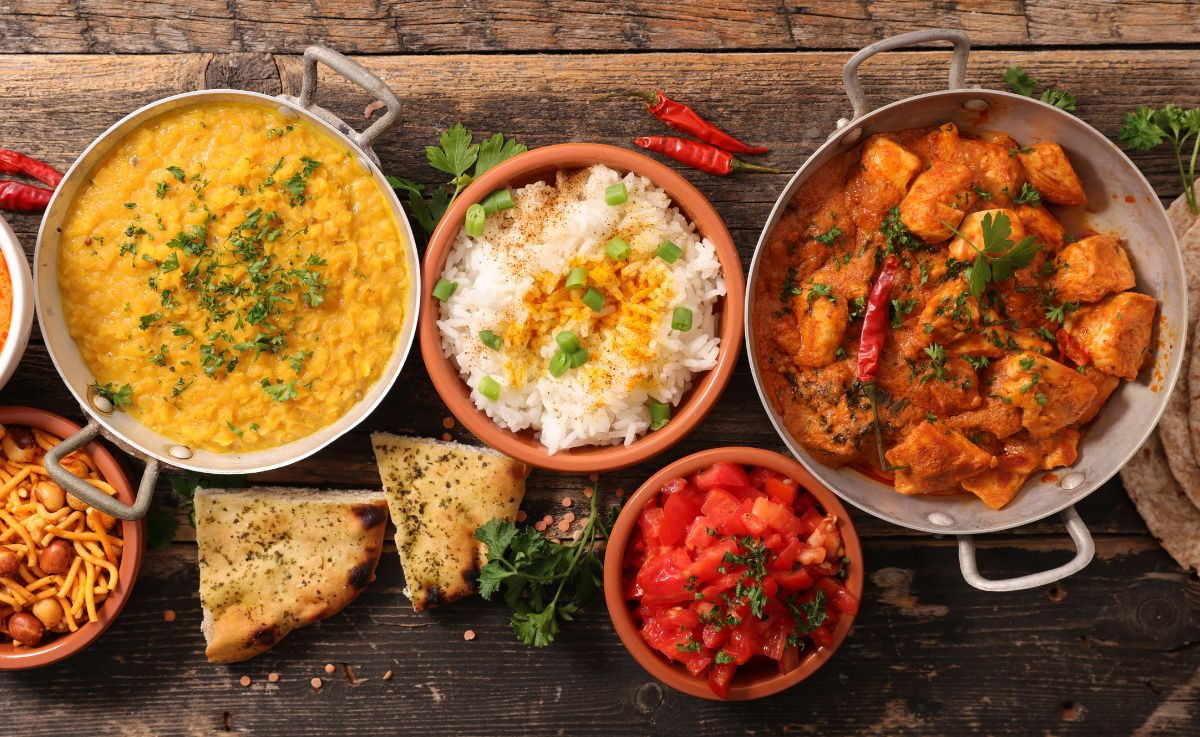Indian cuisine is as diverse and vibrant as the country itself. With a history spanning thousands of years, it is deeply influenced by the country's rich culture, regional diversity, and its long-standing trade relationships with other countries. From the bustling streets of Delhi to the serene beaches of Kerala, Indian food offers an explosion of flavors, aromas, and textures that captivate the senses.
What makes Indian cuisine so unique? Let's dive into the elements, dishes, and cultural significance of one of the most beloved culinary traditions in the world.
The Essence of Indian Cuisine: A Symphony of Spices
At the heart of Indian food is its use of spices. Indian cuisine is defined by its intricate use of spices, which not only add flavor but also provide a host of health benefits. Spices like turmeric, cumin, coriander, and garam masala are used in almost every dish, and the blend of spices varies from region to region, creating a diverse range of tastes.
For instance, in the North, you might find rich, creamy gravies flavored with garam masala and fenugreek, while in the South, the cuisine is often lighter, featuring tangy tamarind and coconut-based dishes. The variety of spices used in Indian cooking is both an art and a science, balancing heat, sweetness, and sourness to create a harmonious dish.
Regional Diversity: From North to South
One of the most exciting aspects of Indian cuisine is its regional diversity. Each state and region has its own unique set of ingredients, cooking techniques, and flavors that reflect the geography, climate, and culture of the area. Here are some highlights from both the North and South of India:
-
North Indian Cuisine: Known for its hearty, rich dishes, North Indian food is heavily influenced by Mughal and Persian cuisine. Famous dishes include butter chicken, dal makhani, palak paneer, and naan. The use of dairy products like cream, yogurt, and paneer (Indian cottage cheese) is prevalent in many North Indian dishes, creating creamy, flavorful gravies and curries.
-
South Indian Cuisine: In contrast, South Indian food is lighter and often vegetarian, with a focus on rice, lentils, and fermented foods. Dishes like dosa (crispy rice pancakes), idli (steamed rice cakes), and sambar (a tangy lentil stew) are staples in the South. Coconut and curry leaves play a big role in the flavors of South Indian food, with the dishes often served with chutneys and sambar.
-
Western and Eastern Cuisine: The Western regions of India, such as Gujarat and Maharashtra, are known for their sweet and savory dishes, like dhokla (steamed savory cake) and pav bhaji (spiced vegetable curry served with buttered bread). In the East, the coastal regions like Bengal are famous for their fish curry, often made with mustard oil and paired with rice.
Iconic Indian Dishes You Must Try
Indian cuisine is filled with iconic dishes that have become popular all over the world. Here are some of the must-try dishes:
-
Biryani: A fragrant rice dish made with layers of marinated meat (usually chicken, mutton, or beef) and aromatic spices. Biryani is a celebration of flavors and is often served with yogurt or raita (a yogurt-based side dish).
-
Samosa: A crispy, deep-fried pastry filled with spiced potatoes, peas, or meat. Samosas are a popular street food in India and are often enjoyed with chutneys.
-
Tandoori Dishes: Cooked in a tandoor (clay oven), tandoori dishes like tandoori chicken and naan are known for their smoky flavor and tender texture. The meat is marinated in a blend of yogurt and spices before being grilled to perfection.
-
Chole Bhature: A North Indian favorite, chole bhature consists of spicy chickpeas (chole) served with deep-fried bread (bhature). This dish is often enjoyed as a hearty breakfast or lunch.
-
Paneer Tikka: A popular vegetarian dish, paneer tikka consists of marinated chunks of paneer grilled to perfection. It's served as an appetizer with a side of chutney.
Sweet Endings: Indian Desserts
No meal in India is complete without a sweet treat. Indian desserts are rich, indulgent, and often made with milk, sugar, and ghee (clarified butter). Some popular Indian desserts include:
-
Gulab Jamun: Soft, deep-fried dough balls soaked in a fragrant sugar syrup. These are often served warm and are a beloved treat at festivals and special occasions.
-
Jalebi: A sweet, crispy dessert made from deep-fried batter soaked in sugar syrup. The result is a crunchy, syrupy treat that's utterly irresistible.
-
Kheer: A creamy rice pudding made with milk, sugar, and cardamom. Kheer is often served chilled and garnished with pistachios or almonds.
-
Rasgulla: Soft, spongy balls made from chhena (a form of cheese) soaked in sugar syrup. This dessert hails from Bengal and is loved across the country.
The Cultural Significance of Indian Food
Indian cuisine is not just about food; it's an essential part of the culture and daily life. Meals in India are often a social event, and food plays a significant role in religious ceremonies, festivals, and family gatherings. In India, food is considered a source of life, and preparing a meal is a spiritual act. Whether it's the celebration of a wedding or the daily ritual of a family meal, Indian cuisine brings people together in more ways than one.

